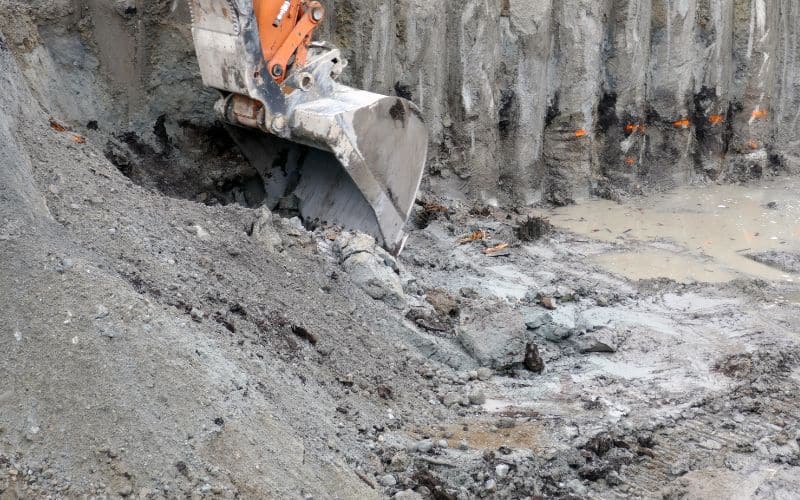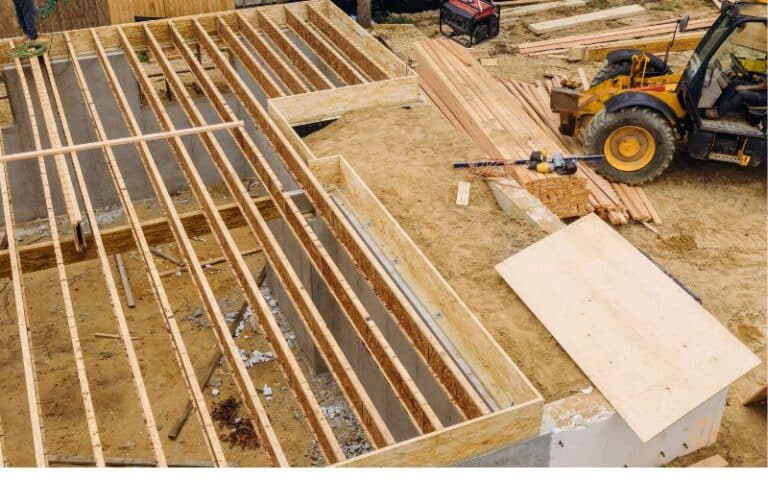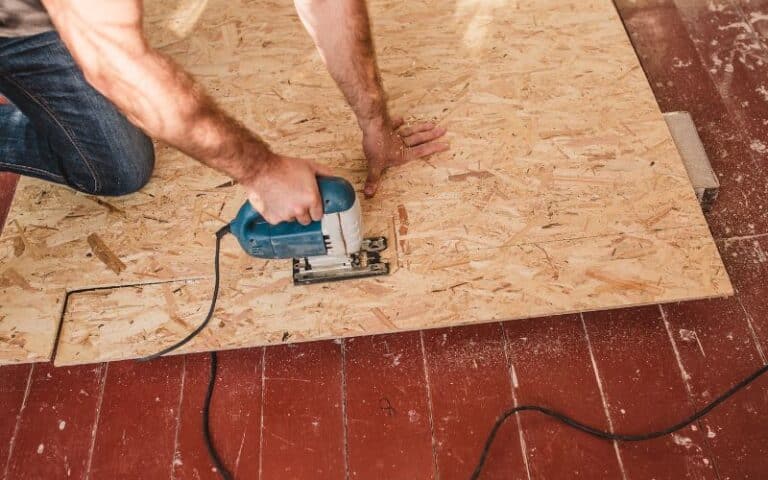When you have a large tree in your front yard, it instantly becomes the focal point of your home. They provide you with oxygen and add beauty to your environment simultaneously.
However, they might lead to structural issues if planted close to a foundation. In addition, tree roots may wreak havoc on foundations, pipes, and pavement, resulting in expensive repairs.
Aggressive tree roots can deplete soil moisture and cause cracks in a home’s foundation if the tree is located too close to the building. In addition, the foundation can also be lifted since it can get beneath it.
Ready for a Flooring Quiz?
Can You Build a Foundation over Tree Roots?

It is not advisable to build a foundation over tree roots. Although the majority of trees, though not all, do not cause any threat to the structure of your home’s foundation.
Building foundations have already been shown to collapse due to trees with aggressive, wide-reaching, above-ground roots that pierce the compacted ground.
It also collapses when a problem, such as a concrete setting, or when there are damaged and leaky sewage lines.
However, in most instances, trees will only damage the foundation if circumstances are favorable.
For instance, invasive roots are often fostered by weak backfill dirt, fractures in concrete, and leaky pipes, all of which may aggravate damage or threaten the foundation.
If you are worried about the stability of the foundation, you should consult a trained arborist before taking any action regarding the roots.
Can Remove a Tree Cause Foundation Problems?
When a tree is cut down near a house’s foundation, the soil around the structure might become unstable and create immediate or future issues.
When removing the tree stump, extreme caution is required if the tree is located within a few inches of a foundation. This prevents the removal process from disturbing the foundation’s soil.
Roots left behind after a tree has been removed may sometimes rot, deteriorate, and produce significant air pockets around the foundation, which can cause the foundation to shift.
It may be a severe problem if the tree’s roots have caused damage to the foundation while it was still standing.
Additionally, tree roots can take in a significant quantity of water, which is retained in the soil even after the removal of the roots.
The soil becomes more expansive due to more water. This uplift exerts additional strain on the structure, resulting in the ground seeming to be noticeably higher than it had been in the past.
This phenomenon, known as ground heave, is a common concern, especially when big or old trees are cut down.
The property’s foundations can shift if a tree is chopped or destroyed without considering the heave.
Even if just a portion of the foundation is compromised, fractures and separation are still a distinct possibility.
How Close to a Tree Can You Build a Foundation?
Twelve feet is the minimum safe distance between a 10-foot-tall tree and a structure, given that its canopy spans twenty-four feet.
To avoid damaging the foundation, provide enough room between the trunk and the structure’s base as the tree’s canopy radius or height.
The recommended planting distance for small and medium flowering trees, such as the jacaranda tree, is ten feet from home.
Other bigger trees, such as oaks and cypresses, should be planted between fifteen and thirty feet away from the foundation at the very least.
Their massive trunks and large branches are upheld by lengthy and dense roots, providing a complementary and supplementary structure.
The kind of soil that is present in your yard is an important consideration for the survival of trees.
Water and nutrients are essential for tree development, and the state of the soil the tree leaves behind is primarily a reflection of the quality of its food source.
Though rich in nutrients, clay soil is vulnerable to drying out during dry periods.
Even if they are beneficial, trees planted in clay soil tend to dry up the earth, which may affect the foundation of a home and its overall structural stability.
Can Trees Roots Ruin a Foundation?
The existence of an opening in the ground allows tree roots to cause harm to the foundation of a home.
Tree roots are incredibly adaptable and will only develop and enter areas where they can do so easily, such as broken and decomposed soils.
When tree roots come into contact with impervious surfaces like pipelines, pavements, fences, and foundations, they often reroute themselves laterally or climb up and over the obstruction.
However, if there is a hole or a fissure nearby, they can and will use such voids to find sources of moisture.
Roots aren’t capable of causing harm to gound materials; instead, they are adept at locating breaches and passing through them to reach the wet, nutrient-rich environment within the pipe.
In most cases, the growth of roots is horizontal, and it typically does not extend very far below the surface of the soil.
When the roots of a plant come into contact with the weaker backfill dirt close to the foundation, they may suddenly begin growing downward.
If these roots are there, you could be able to find them if you excavate a few feet around the foundation and dig down about a foot or two.
If you detect a root that seems odd, you should remove it. However, excavating down to the foundation may be required in certain circumstances.
This may need to be done in any case to stabilize it. Removing the roots can avoid future issues, particularly if a root barrier is installed to minimize re-growth after the roots have been cut.
How Do I Get Rid of Tree Roots under My House?
You have a variety of options available to you to get rid of the roots if you are worried about the possibility that they may cause damage to your foundation.
Most problems occur after construction, and long-established trees have been planted nearby.
#1. Building a Root Barrier
Building a root barrier is one approach you may use to alleviate the problem. However, you may need to dig down to the bottom of the foundation of your house to do this.
While excavating for the barrier, you can remove any roots growing close to your building’s foundation by cutting them away.
Even while the procedure might be an inconvenience at times, it is preferable to naively hope that changing the seasons and the development of roots won’t harm your property.
#2. Minimizing Other Tree Plantations
You can also minimize damage caused by tree roots by rethinking your intentions to grow trees in surrounding your house. It is an additional measure you can take to protect your property.
Before you go ahead and plant a tree in your yard, the size of your property should be one of the primary factors you take into consideration.
It is a prevalent perception that a tree will have roots that are as wide as the tree is tall; however, this is an incorrect assumption that grossly misrepresents the real reality.
Suppose you need more room to maintain the tree’s roots. In that case, you should consider replacing the tree with something smaller or selecting an alternative kind of landscaping.
When constructing a brand-new building, you can take a few measures to protect it against potential root damage in the years to come.
A foundation not properly deep is one of the most typical factors contributing to foundation deterioration.
Older houses constructed with shallow foundations are more susceptible to root damage and concrete settlement than newer homes because of their shallow foundations.
These shallow foundations are far more susceptible to dried-out soil conditions and changes, while complete basements provide a substantial degree of protection to the structure.
If you are concerned about the spread of invasive roots, you should wait to begin chopping down trees.
It is often not essential, and it is something that you can prevent by using such measures as a root barrier.
Examining the soil type and the foundation’s condition can also show that the roots of your trees do not pose a significant risk to your house.
Cutting down trees should be a measure used as a last resort in case of a suspected root issue.
#3. Pros and Cons of Having Trees in Your Home
| Pros | Cons |
|---|---|
| It beautifies the environment. | It causes excessive water on the ground when removed |
| It serves as a shade during hot conditions | It damages building foundations and pipes when close. |
| It serves as a shield or barricades. | It leaves dirt and dents on the ground when removed. |
Final Thoughts
The best way to safeguard a property is by removing a tree. However, ground heaves should be considered throughout the removal to guarantee the building’s foundation.
Consulting with professionals is the only way to guarantee that you may cut down the trees on your property without posing a danger to anybody or anything else.






